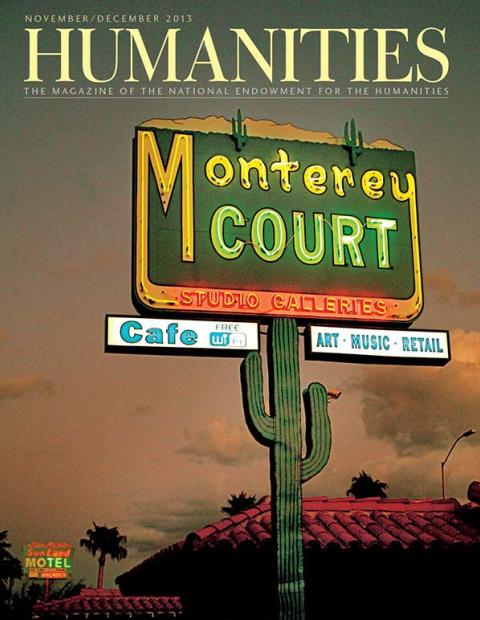In a video clip on the website Gulag: Many Days, Many Lives, artist Nikolai Getman remembers, “I was given jobs painting posters and slogans. Slogans like ‘Shock Work Is the Path to Freedom’ or ‘Liberation Through Honest Toil.’ And whose quotations were these? The words of our Great Father. So, I had to make a portrait of him as well. I did a good job of painting him. His portrait came out well.”
Any kind of pride Getman may have taken in his work is dubious. Millions survived the Gulag, but as the NEH-funded site points out, many would have laughed at the idea that they had been re-educated. Most would have said they had been traumatized, brutalized, and disfigured.
The website, created by the Center for History and New Media at George Mason University, depicts the unforgivingly brutal surroundings of the many prisons and work camps, not only through prisoners’ words, culled from memoirs, but also the visual arts—drawings and paintings. Artists used anything available for materials—even pig’s blood—as did musicians, who fabricated primitive instruments. This retreat into the life of the mind—writing, reciting poetry, holding discussions on history and philosophy, creating chess sets—was one means of survival.
Even so, survival depended more often on compromise, cruelty, and luck. “Man is wolf to man,” a saying one prisoner learned as a child from his mother, comes back to him as an accurate summing up of circumstances in the camps, where one and a half million Soviets perished. Finding allies was essential to survival, as were support networks. As sadistic as the guards could be, sometimes, at great risk, they took pity on prisoners and treated them humanely. Competition among prisoners was also essential for survival, prompting struggles years later among memoirists who were still haunted by ethical quandaries resulting from actions they took to stay alive at the expense of others.
During the harshest years of the Gulag—from the early thirties to the mid fifties—the most feared sound in cities and towns was a knock at the front door at 2 a.m., when arrests were commonly made. Later in the day, if anyone cared to look closely enough, they might have noticed innocuous-looking delivery trucks—euphemistically called “black ravens” or “black Marias”—circulating through the streets, which were equipped with prison cells. Victims were routinely delivered to crowded interrogation prisons, where, after a farcical trial, they were either summarily executed or shipped by cattle car to one of the Gulag’s labor camps, where forced labor was used to open up new regions to resource exploitation.
“Glory to Stalin,” ran one propaganda slogan found in the camps, “the Greatest Genius of Mankind.” It’s difficult to imagine that the prisoners who died while digging a canal a hundred forty miles long with primitive tools would have concurred.

